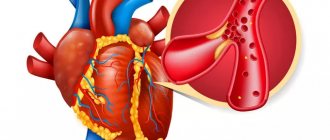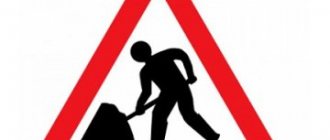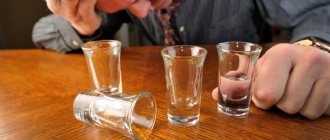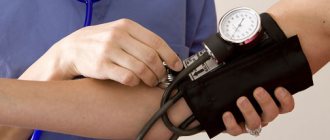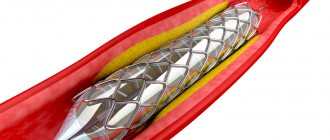The procedure of stenting the heart vessels is an important operation that helps normalize blood circulation and prevent complications.
The introduction of stents through surgery can alleviate the condition of patients and ensure the correct functioning of the cardiovascular system.
To achieve a lasting result, you will need to make a lot of effort: change your lifestyle, strictly follow medical instructions. After all, neglecting the doctor’s recommendations, non-compliance with food intake rules, and low mobility will lead to impaired blood flow, which will cause complications.
Contraindications in eating after surgery
There is a list of products contraindicated during recovery after coronary artery stenting surgery, as well as after myocardial infarction. It is necessary to exclude from the diet:
- confectionery;
- carbonated drinks, alcohol;
- White bread;
- fatty meat, sausages;
- marinade;
- egg yolk;
- all legumes;
- coffee and chocolate.
Nutrition after stenting of the coronary vessels of the heart should exclude dishes that contain large amounts of salt. The substance provokes fluid retention, which causes an increase in blood pressure.
Please note that many patients with coronary artery disease develop hypertension after stenting. In such cases, you should pay special attention to this advice.
The amount of salt consumed should be reduced to 4 g (half a teaspoon) per day. Remember that most prepared foods include salt.
Reviews and results
As evidenced by medical practice and reviews from most patients, dietary nutrition after bypass surgery and testing of heart vessels is the most important component of the treatment process and the prevention of further progression of atherosclerosis.
- “... At the age of 65 I was admitted to cardiology with acute coronary syndrome. We did stenting, a regular metal stent (Multi-Link VISION). There were no complications. The only medications prescribed were Plavix, Cardiomagnyl and Egilok. Cholesterol is 5.3, they prescribed an anti-cholesterol diet, which, according to doctors, I need to follow for life. And now I’ve been sitting on it for more than 6 months. I don’t feel any particular inconvenience, since there are many permitted foods in the diet”;
- “... After stenting the coronary vessels (4 stents) 3 years ago, the lipid profile is still unsatisfactory. For normalization, strict therapeutic nutrition was recommended. I followed this diet immediately after the operation, but then I relaxed and began to break it. Now I’m starting to eat again on the doctor’s recommendation, I hope it will help.”
Diet features
Methods of cooking and choice of foods after myocardial infarction are directly related to the period of the disease (acute, subacute, scarring). This is associated with the severity of the patient’s general condition and his motor ability. Patients sometimes endure small-focal pathologies “on their feet.” In other cases, bed rest is indicated.
Diet for heart attack involves obtaining the following results:
- ensuring the digestive process with gentle stress on the esophagus, diaphragm, stomach;
- maintaining non-stop bowel function;
- preservation of the body's energy expenditure;
- prevention of pathologies that can worsen the patient’s condition;
- strengthening the patient, renewing lost strength after an attack.
Special rules have been developed, the observance of which will avoid complications and also speed up the process of recovery of the body after surgery. These include:
- Eating about 6 times a day in small portions.
- Dishes should not be too hot or cold.
- Reducing the amount of salt consumed.
- Serve food warm (no more than 50°C), because cold stimulates spasm of the esophagus, which injures the myocardium.
- Minimize the amount of sugar, due to the fact that it negatively affects blood clotting.
- Supplementing the diet with foods rich in fiber (wholemeal bread, vegetables, cereals, fruits).
- Reducing the amount of protein consumed, which will improve vascular permeability and improve blood clotting.
- Consumption of vitamins A, C, B6, PP, as well as magnesium, zinc, potassium, iodine will accelerate the breakdown of cholesterol and normalize lipid metabolism.
Nutrition after stenting of cardiac vessels should have a low energy value. The daily diet should cost up to 2600 kcal, including 70-90 g of proteins (half can be from animals), 80 g of fats (vegetable) and 300-350 g of carbohydrates (the amount of easily digestible carbohydrates should be minimal).
It is necessary to consume fish of “white” varieties. The fatty acids included in its composition improve cholesterol metabolism. Reducing the threat of blood clots.
Alcohol after a heart attack and stenting: specifics of the disease and procedures
Stenting is a procedure to strengthen blood vessels. This is an artificial surgical intervention necessary in a situation where the vessels are affected by cholesterol plaques. Doctors consider this procedure to be uncomplicated, and it is really simple to perform and is usually easy to tolerate. However, after it the body remains weakened and needs time to recover . To make it easier to endure the rehabilitation period and not put unnecessary strain on the heart and blood vessels, it makes sense to give up alcohol for at least a few weeks . The harmful effects during this period will definitely be unnecessary, and if you are counting on the complete restoration of blood vessels and heart, on maintaining and improving your health, you should definitely give up alcohol.
In the future, after a few weeks, you can already drink alcohol - after the doctor’s permission. And even moreover, many experts indicate that it will be useful. However, it is necessary to observe safe dosages and limit yourself in this regard.
In addition, after stenting, you should follow the norm for physical activity. Any problem with the cardiovascular system is by definition a dangerous disease for both men and women. Yes, and stenting is not prescribed for everyone; it is first necessary to conduct a study, find the cause of the problems, and eliminate the consequences. The main reasons for scheduling this event are :
- Unstable angina, especially after a heart attack,
- Angina if you want to lead an active lifestyle,
- Lack of results from drug treatment,
- There are no contraindications for the procedure.
When considering the possibility of taking alcohol after a heart attack and stenting, it is worth remembering that in the first weeks the risk remains elevated , and the cardiovascular system requires attention and lack of stress. At this time, you cannot even take a cold or hot shower, and therefore you should refuse alcohol even if you have a strong desire to take it.
What products are recommended?
After the procedure of stenting the coronary vessels of the heart, the patient’s daily diet will need to be filled with foods that will reduce cholesterol levels and reduce the threat of atherosclerosis and angina.
To do this, the diet must include dishes containing fiber, carbohydrates, and fatty acids. The menu includes soups made from vegetable broth with the addition of cereals. The following products are allowed:
- Lean varieties of red meat (veal, lean beef).
- Poultry (chicken), rabbit.
- Low-fat varieties of white fish (tuna, cod, hake).
- Seafood (squid, shrimp, mussels).
- Oils (sunflower, olive) cold pressed.
- Dairy products (low-fat kefir, fermented baked milk, low-fat cheeses).
- Egg white.
- Dried fruits.
- Bakery products made from wholemeal flour.
You will need to eat more fruits and vegetables processed by any cooking method. The inclusion in the diet of fresh juices from unsweetened fruits (apricots, apples) and berries (raspberries, black currants, cherries) is welcome.
Patients must eat fresh garden herbs every day. Rosehip decoctions will help improve blood circulation.
Diet by day
Based on the permitted products, a sample menu after stenting the coronary vessels of the heart will look like this:
- It's better to start the day with a breakfast of buckwheat porridge with milk. For dessert, you can eat oatmeal cookies, washed down with weak tea. A slice of lemon will help add flavor to the drink.
- Second breakfast may include cottage cheese casserole, carrot and apple salad and a protein omelet.
- For lunch, vegetable broth, mashed potatoes with a small piece of chicken are best. Eating a vegetable salad with herbs is also encouraged.
- For an afternoon snack, it is recommended to choose dried fruits (dried apricots, raisins, dates).
- For dinner, boil rice, prepare a beet salad and a white fish steak.
3 hours before bedtime, drink a glass of low-fat kefir. You will have to give up late snacks.
Product Recipes
To prepare potato casserole with mushrooms you will need 1.5 kg of potatoes, 0.5 kg of mushrooms (your favorite), 1 medium onion, 0.5 kg of soft low-fat cottage cheese, 2 tsp. butter (a little will be needed to grease the baking dish).
- Boil half of the specified volume of potatoes, remember, adding 2 tsp. oils
- Chop the mushrooms and onion as finely as possible. Pour the resulting mixture into a frying pan, seasoning with 1 tsp. oils Simmer over the fire without adding salt.
- Preheat the oven to 180°C. Grease a baking dish with butter, place the casserole ingredients on it in the following order: cover the bottom with a centimeter layer of puree, grease it with a mixture of stewed mushrooms and onions, then a layer of puree, then mushrooms again. The number of such layers will be limited only by the height of the form.
- Peel the remaining potatoes and cut into thin slices. These will be the top of the casserole. The top of the dish is greased with soft cottage cheese. You can grind it in advance in a blender or meat grinder until it has a homogeneous structure.
- Bake the dish in the oven for 45 minutes, maintaining the temperature at 180°C.
Before serving, the casserole can be decorated with sprigs of herbs.
What happens if you don't follow the rules?
Arterial stenting procedures are considered quite difficult, so to achieve lasting results you need to follow a certain lifestyle. More precisely, diet after stenting of the coronary vessels of the heart is the most important component of therapy during the rehabilitation period.
Proper organization of nutrition after surgery will prevent the re-development of angina and additional vascular operations.
Nutritional risk factors for the secondary development of atherosclerosis, coronary heart disease, and surgical procedures include:
- High energy value of dishes, which provokes obesity.
- Consumption of excess amounts of cholesterol under the condition of a deficiency of products that normalize its metabolism.
- Lack of fatty acids that normalize cholesterol metabolism, reducing its deposits on vascular walls.
For full recovery, medical recommendations include reducing stressful situations and regularly taking prescribed medications. After rehabilitation, it is important to regularly attend preventive examinations.
Drug therapy after valve replacement
Patients undergoing surgery must take medications prescribed by their cardiologist.
- When installing donor valves, the patient will have to take immunosuppressive medications after surgery and for life. This reduces the risk of foreign tissue rejection.
- If a patient has symptoms of cardiovascular disease after valve replacement (for example, he has angina, arterial hypertension, etc.), he should take appropriate medications regularly and on an ongoing basis. The composition of therapy and dosage of medications are determined by the doctor. If at some point the recommended treatment regimen no longer “works” as before, you should definitely consult a doctor for examination and treatment correction.
- If a patient needs valve replacement due to rheumatic heart disease, they may need to take periodic antibiotics after surgery to prevent rheumatic heart attacks.
- All patients with mechanical and biological valves are prescribed anticoagulant therapy. A foreign body is actually introduced into the heart, to which the blood system reacts with increased coagulation. As a result, blood clots can form on the valve, which complicate its operation, can break off and enter the bloodstream, resulting in dangerous and even life-threatening complications - stroke, vascular thrombosis, pulmonary embolism.
Anticoagulants prevent the formation of blood clots, and therefore their use is mandatory. The most commonly used indirect anticoagulant is warfarin. People who have a biological valve should take warfarin for 3-6 months (with some exceptions), while those who have a mechanical valve will need to take the drug continuously.
Anticoagulants are drugs that actually save the lives of patients with artificial valves. However, in addition to benefits, they can also cause harm. The ability of blood to clot is a protective mechanism that prevents blood loss when injured. If anticoagulants are taken in excess, when clotting is suppressed too much, the patient may experience corresponding complications, sometimes even severe bleeding and hemorrhagic stroke.
To avoid this, it is very important to monitor the state of the blood coagulation system. Therefore, patients taking warfarin need to monitor the INR (international normalized ratio; it determines the adequacy of anticoagulant therapy). It is usually maintained at a level of 2.5-3.5 (there may be some variations depending on the specific case). A blood test to determine INR should be taken monthly.
Some patients are also recommended to take antiplatelet drugs - aspirin-based drugs - after valve replacement.

